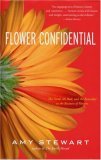Valentine’s Day is the biggest day of the year for the cut-flower industry. Millions of people — one-third of American adults — will buy flowers or plants to give to spouses, lovers, parents, and friends. Florists will work from dawn until dark filling orders; supermarket floral departments will empty out their coolers. Flowers will cost two or three times what they cost last month — if they can be had at all. Some people will still go home empty-handed because they didn’t order in advance.
Valentine’s Day will be complicated by an additional factor this year — the green credentials of flowers. Never has there been so much press coverage of where flowers were grown, who grew them, and what conditions they were grown under. In the past few months, there has been a flood of articles about the dismal conditions at most equatorial flower farms, followed by a flood of articles about the fledgling organic and Fair Trade flower movements.

The best thing I have read on the subject is Amy Stewart’s book Flower Confidential. It has gotten a huge amount of press, and most of the reviews have focused on the chapters about the terrible working conditions for most flower workers in South America. But this book is about much more — it’s about flower breeding, genetic engineering, domestic flower production, the Dutch auction system, the wholesale market, and the florist business. Stewart examines the entire conventional flower industry with a hard, yet loving, eye. My only disappointment was that she didn’t mention the local flower movement in the United States. Flowers grown locally and sustainably are an option in many places, especially during the warm months.
Reading about the conventional flower industry will help you appreciate anew the value of growing flowers for local markets. Click here to read some statistics about the Valentine’s Day flower holiday from the Society of American Florists.